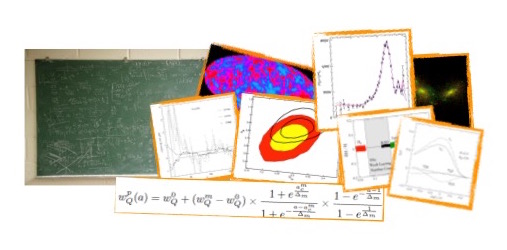
“Truth emerges more readily from error than from confusion”
Francis Bacon
My research spans a broad range of topics in cosmology and is primarily motivated by the quest for the invisible components in the universe, namely dark energy and dark matter. Early in my career, I mainly focus on the imprints of non-standard models of dark energy, such as a “quintessence” scalar field on the large scale clustering of matter as probed by the anisotropies of the Cosmic Microwave Background. The bulk of this work was devoted to the study of the so-called linear regime of gravitational collapse of matter.
Joining the CNRS, I extended this research to the late time regime of the clustering of matter at small scales, where dark matter clumps to form halos. These are the building blocks of the cosmic structure formation, in which gas falls in to form and stars and galaxies we observe today. This has led me to the use of N-body simulations as primary tool of investigation, and the development of novel analytical methods to model the results of numerical simulations.
The study of the non-linear structure formation in non-standard dark energy scenarios through the realisation and analysis of cosmological N-body simulations has naturally drawn to investigate other topics. In particular, the imprint of non-standard dark matter scenarios on the abundance of low mass halos at very high redshifts and the identification of novel cosmological probes based on the observations of galaxy clusters.
The realisation of this vast research program would have not been possible without the contributions of the PhD students and postdocs who I had the opportunity to collaborate with over many years.
